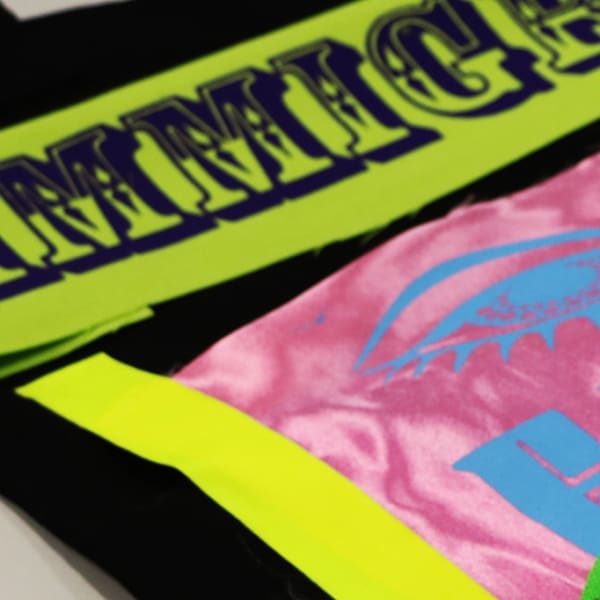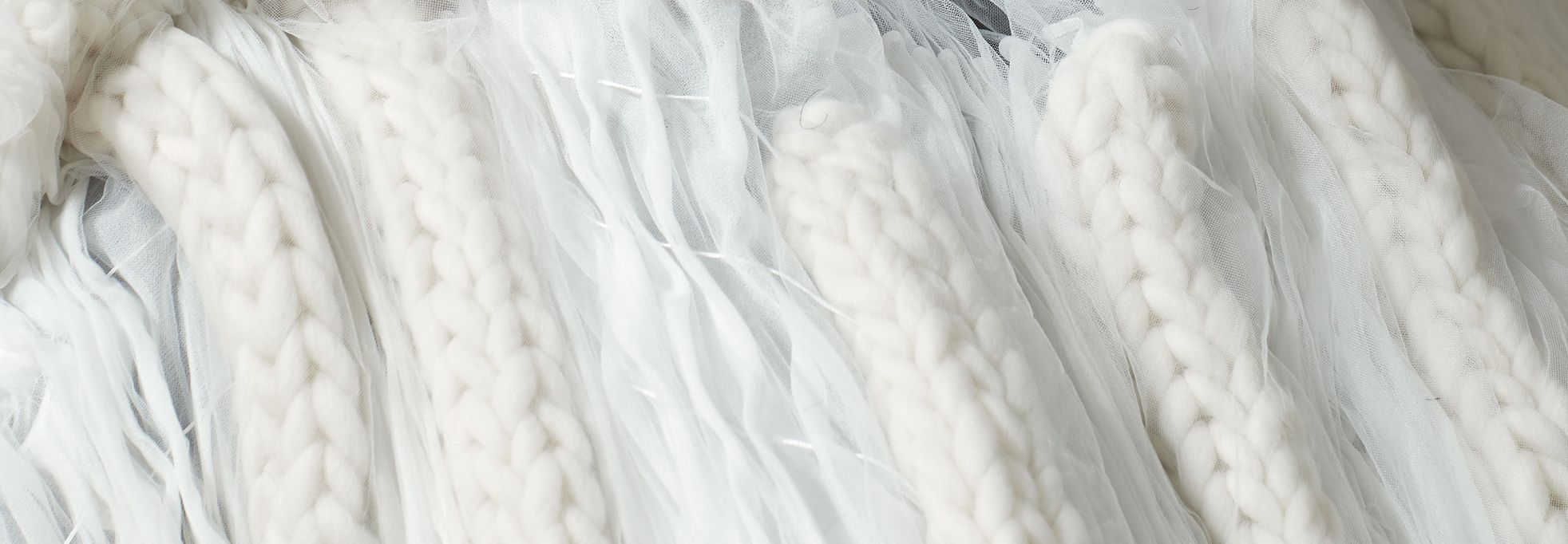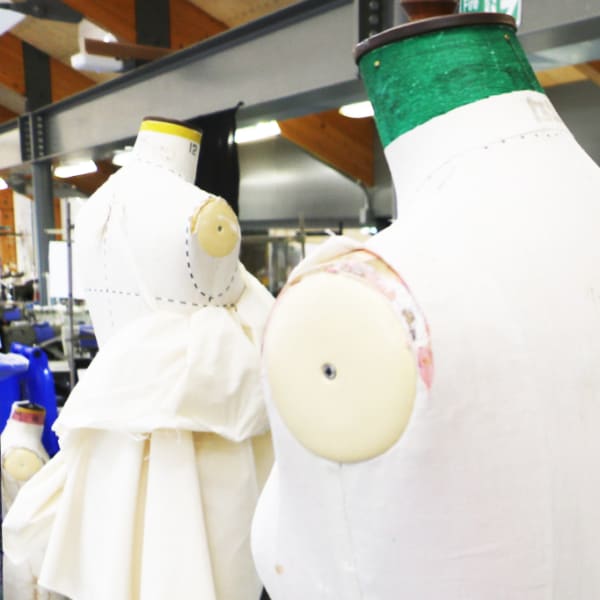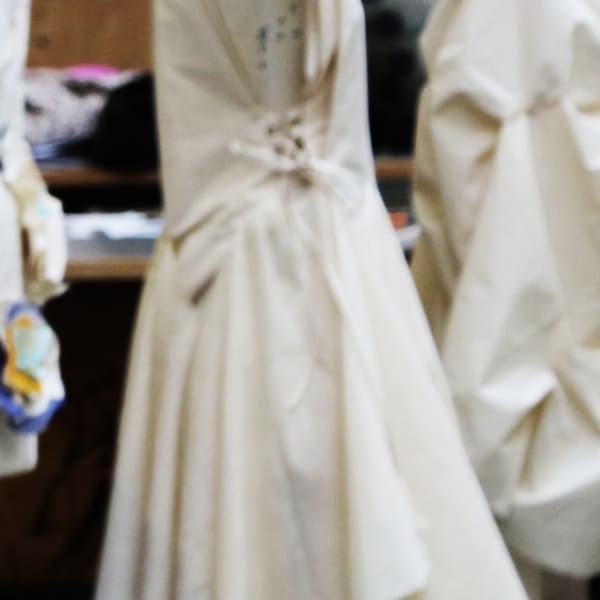
How to start a sustainable fashion business

- Written byMariana Jaureguilorda Beltran
- Published date 12 January 2022

Fashion is a global industry worth 3 trillion dollars (Fashion United), employing more than 3 billion people, and is said to be one of the world’s most polluting industries.
The fashion industry has the power to make positive change, re-imagining and revising currently damaging systems.
Whether you are an entrepreneur looking to set up a sustainable fashion label, a designer who wants to be more responsible or someone who wants to study fashion, this is for you!
We interviewed sustainability and fashion business experts to get ideas, insights and insider tips on how to start a sustainable fashion business.
Build up your know-how
Fashion is a huge and complex industry. If you are not already a seasoned professional, spending time learning the trade from the shop floor up will really pay off in the long run.
Tina Sutradhar, founder of MIUNIKU and LCF Fashion Design tutor, says, "when starting a new business, you will have lots of choices to make, some of which will represent big risks. Working within the industry will show you how fashion works in the real world, and with industry know-how and experience you can reduce those risks."
We all learn from our mistakes, but bad business decisions can cost time and money. There are many ways to improve your knowledge base, such as interning, working in the industry, taking a degree or a fashion short course, networking, and reading the industry press.
You don’t need to come from a fashion background either – starting a fashion business requires a breadth of different skill sets, many of which are transferable from other industries.
Serial entrepreneur, leader within the British bodywear industry and UAL Short Courses tutor, Nichole de Carle, says “A fashion business requires a combination of ingredients. It's like baking a cake; you need the correct ingredients to make the cake rise. So not only do you need a good product and good design, you need to build the right connections in order to open doors. Then once you've got that product and you're trying to get it to market, you’ll need the finance plan to carry you through each stage of the business journey. And there’s no such thing as an entrepreneur building a business independently. Having a strong team can be the difference between the cake rising or not.”
Check-out Nicole's 12 steps to launching a new product.

Define Your Sustainability Ethics
Before getting knees-deep into a business plan and starting your business – consider what it actually means to be “sustainable”, and how this works for your own brand. The two pillars that determine sustainability for a fashion label are ethical production and fabric selection.
Condè Nast and Centre for Sustainable Fashion (CSF) launched the sustainable fashion glossary, the authoritative global resource on sustainable fashion and the fashion industry's role in the climate emergency.
The Glossary elaborates on guiding principles and frameworks that underpin CSF at London College of Fashion (LCF), University of the Arts London and LCF's ethos of using fashion to shape lives.
Dilys Williams, Professor of Fashion Design for Sustainability and Director of Centre for Sustainable Fashion commented:
“What we stand up in, should reflect what we stand up for. It’s time to question whether we are being well represented, as well as whether we are well presented. We can create a new era of beauty and style born out of an understanding and intimate connection with our most precious asset; the earth, the greatest designer the world has ever known. By working with the world’s leading fashion, Editors-in-Chief at Vogue, we have been able to develop a vital glossary of terms, a trusted reference point, regarding fashion as a means to exemplify our interdependence with nature and each other”.
These days, it is popular for bigger brands to outsource manufacturing to countries where labour is cheap and legal – resulting in far too many human rights disasters. Choosing countries with fair labour will ensure better wages and working conditions. Manufacturing locally also means creating jobs in your local economy.
Bolupe Adebiyi, founder of sustainable fashion label Cotton Loops, says, “We (Cotton Loops) have invested heavily in the establishment of our own factory where all of our production is done. This ensures total control over and of our production processes and ensures being ethical and sustainable is at the forefront during manufacturing. We are also ethical in paying above average wages, provision of living quarters to factory workers as well as closing at the weekends.”
In addition, the volume of clothing produced is key. It is ethical and sustainable to concentrate on producing fewer garments of higher quality.
In terms of fabric and materials, Understanding Fabrics: Fibres and Fabrics tutor Janet Wilson, suggests, “Inspect the factories where goods are made and make sure that every item is certified as organic and/or sustainable.”
Having a sustainable business means looking at other aspects involved in having a business, such as shipping methods – instead of packaging your product in unnecessary plastic, you could be using recycled and/or biodegradable materials.

Source eco-friendly Materials
Sustainable Textiles tutor Paulette Colman, suggests, “Look for suppliers who have a high degree of control over their supply chain and know where the raw materials come from and can provide you full traceability on them. Their product should be accredited against a third-party standard and not an internal one. What is more, look at supply routes. They should involve as few miles as possible for raw materials and products that support the local industry in a professional way.”
Finding your ideal fabric is more challenging when you are limited to only sustainable and ethically made sources. However, there are quite a few eco-conscious fabric options that are proving to be quite popular with sustainable brands.
“Natural” and organic fabrics have a smaller impact than synthetics. Organic cotton crops use less water than conventional cotton and are not treated with pesticides, that are harmful to animals, farmers and consumers.
Other eco-friendly materials include linen, Tencel and bamboo.
Paulette Colman, says, “ I would also consider using a fabric that was made from a material that would otherwise be waste and that, in its transition to a fabric, did not produce any harmful products in itself.”
Besides natural fabrics recycled, and deadstock fabrics are a great alternative. Deadstock or “surplus” fabrics are leftover or unused by mills, factories, or big brands, and then re-sold at an affordable price instead of being tossed into landfill.
Research and contact a few reputable suppliers and request “swatches” or small samples from them to review. After you have looked through plenty of options, compared several suppliers, and decided on your fabrics you can proceed to design development.
And do not forget packaging! Bolupe Adebiyi says, “In retailing, we use stylish but minimal, easily decomposable paper packaging as well as an option of re-useable cloth (tote) bags – absolutely no nylons or other materials that would contribute adversely to landfill or our oceans.”

Develop Your Design Concept
Once you’ve defined your ethics, your brand identity should be established. Analyse your target market and your ideal customer. Be concise and consistent when establishing your product vision.
Create a mood board, brand message and written summary of your customer persona and reference it along the way.
Start turning your design ideas into tangible products. But how do you go from an idea to the final product? Fashion Design is a technical skill that involves understanding construction, fabrics, seams and stitching. If you are not trained, you could invest in a short course to deepen your knowledge, like learning how to create fashion drawings, pattern cutting and fashion design in general!
At this point, you may decide to hire someone, but you will benefit from having good foundational knowledge to build on.
You will need to create clear design sketches. It will require several stages of fixing and tweaking until you have the “perfect” garments, mock-ups and patterns that you can present to a factory. You will also need a technical sheet or “spec” sheet ready. Spec Sheets communicate crucial construction details to your factory so that they can produce your designs to the t.
We've recently launched our new Sustainable Fashion Design course, make sure to check it out.
Promote Your Label Launch
It's never too early to start promoting your new brand! Create a profile on all the main social media platforms such as Instagram and Facebook, and start posting regularly! Make a website or a landing page, using simple web-creating sites like Squarespace.
You may not have a product ready, but you can still direct traffic to your site and start growing an email sign up list. When the time comes for your company to launch, it’ll be invaluable to have an audience to reach out to. Once again, you may choose to hire someone to take care of the marketing aspect of your business, but having the foundation knowledge can go a long way.
Check-out our comprehensive fashion marketing course for beginners.
These are the most important steps to success for you to become a successful designer, but of course, there is a lot to learn along the way. If you want to develop your skills, take a look at our upcoming summer 2021 short courses as well as our range of online courses to find out how they can help you.

